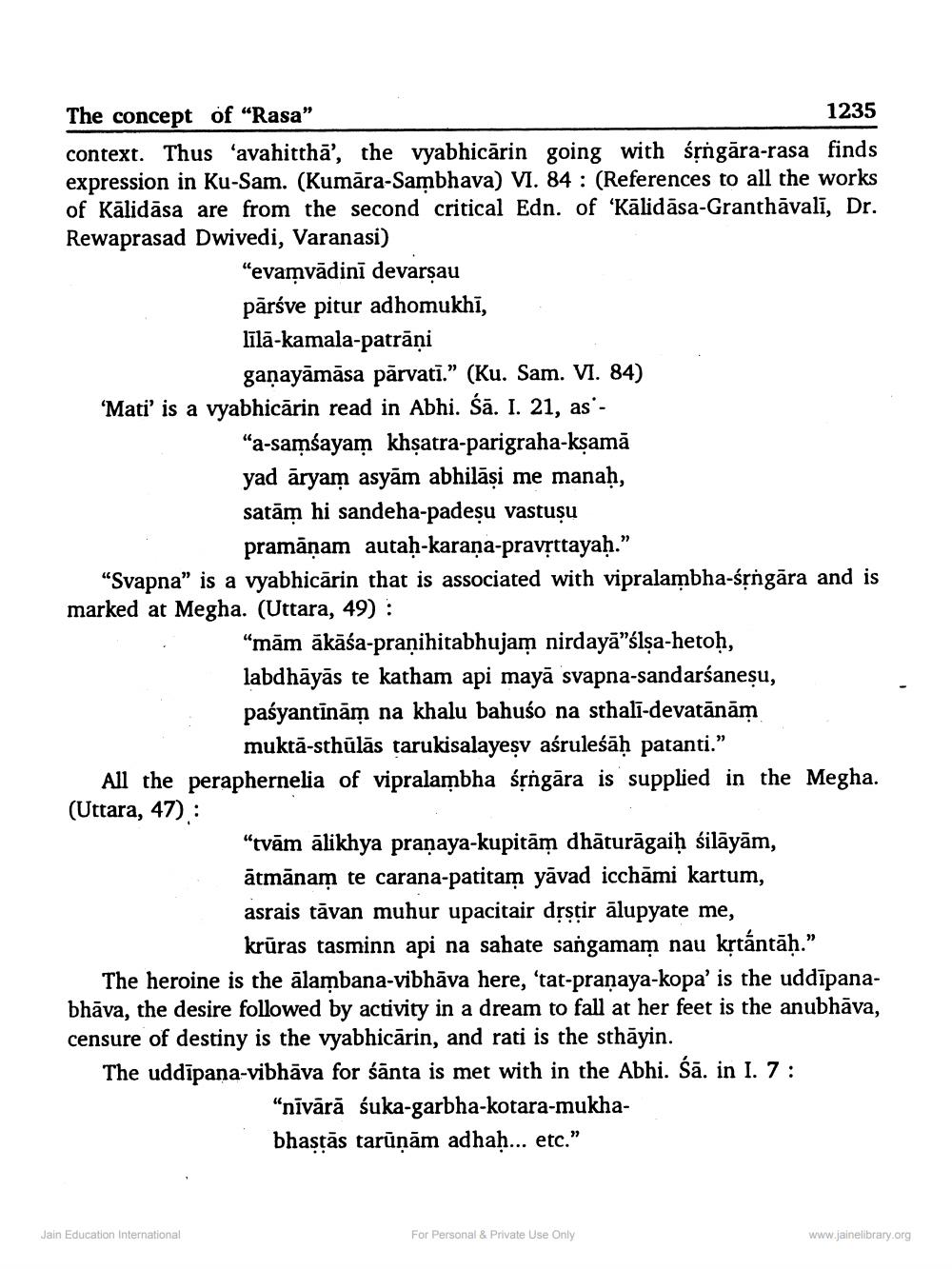________________
The concept of “Rasa”
1235 context. Thus 'avahitthā', the vyabhicărin going with śộngāra-rasa finds expression in Ku-Sam. (Kumāra-Sambhava) VI. 84 : (References to all the works of Kālidāsa are from the second critical Edn. of Kālidāsa-Granthāvalī, Dr. Rewaprasad Dwivedi, Varanasi)
“evamvādinī devarsau pārśve pitur adhomukhi, līlā-kamala-patrāņi
ganayāmāsa pārvatī.” (Ku. Sam. VI. 84) ‘Mati' is a vyabhicārin read in Abhi. Śā. I. 21, as -
"a-samsayam khșatra-parigraha-kşamā yad āryam asyām abhilāși me manaḥ, satām hi sandeha-padeșu vastușu
pramāņam autah-karana-pravṛttayaḥ." "Svapna” is a vyabhicārin that is associated with vipralambha-śộngāra and is marked at Megha. (Uttara, 49) :
“mām ākāśa-praņihitabhujam nirdayā”ślşa-hetoh, labdhāyās te katham api mayā svapna-sandarśaneșu, paśyantīnām na khalu bahuśo na sthalī-devatānām
muktā-sthūlās tarukisalayeșy aśruleśāḥ patanti.” All the peraphernelia of vipralambha śộngāra is supplied in the Megha. (Uttara, 47):
"tvām ālikhya pranaya-kupitām dhāturāgaiḥ śilāyām, ātmānam te carana-patitam yāvad icchāmi kartum, asrais tāvan muhur upacitair drsțir ālupyate me,
krūras tasminn api na sahate sangamam nau kệtántāḥ.” The heroine is the alambana-vibhāva here, 'tat-pranaya-kopa' is the uddīpanabhāva, the desire followed by activity in a dream to fall at her feet is the anubhāva, censure of destiny is the vyabhicārin, and rati is the sthāyin. The uddīpana-vibhāva for śānta is met with in the Abhi. Śā. in I. 7:
“nīvārā śuka-garbha-kotara-mukhabhastās tarūnām adhah... etc."
Jain Education International
For Personal & Private Use Only
www.jainelibrary.org




